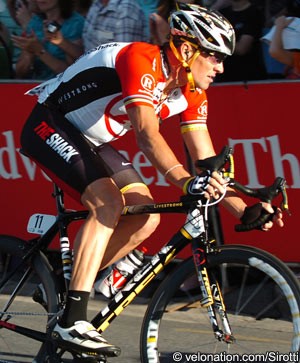Magazine outlines what it says were repeated violations of doping regulations
 One day before Sports Illustrated prints an extensive piece on the investigation into Lance Armstrong and the US Postal Service team, the magazine has released some details of what it says were multiple doping violations by the rider and his team.
One day before Sports Illustrated prints an extensive piece on the investigation into Lance Armstrong and the US Postal Service team, the magazine has released some details of what it says were multiple doping violations by the rider and his team.
It stated that Sports Illustrated writers Selena Roberts and David Epstein reviewed ‘hundreds of pages of documents and interviewed dozens of sources in Europe, New Zealand and the U.S.’ for the investigative feature, which will appear on newsstands on Wednesday.
The duo outline a number of separate claims in the preview piece released today, each of which has been rejected by Armstrong. The first is an accusation that the Texan gained access to the EPO-like drug HemAssist in the late 1990s. It was in clinical trials at the time and no test existed for it.
They report that several years prior to that, Armstrong’s testosterone to epitestosterone ratio exceeded the-then maximum permitted ratio of 6:1 on three occasions between 1993 and 1996, and that well-known anti-doping expert Don Catlin didn’t open disciplinary proceedings. It claims the highest test was a 9:1 T:E sample collected on June 23, 1993, weeks before Armstrong won his first stage in the Tour de France plus cycling’s world championships. The other two were of a 7.6:1 ratio from July 7, 1994, plus a 6.5:1 ratio from June 4, 1996. Armstrong has denied these claims.
Sports Illustrated documents claims from former Motorola team member Stephen Swart that Armstrong was the main instigator behind riders on the squad starting to use EPO, and that his hematocrit on a rest day during the 1995 Tour de France “was 54 or 56.” A year and a half later, this level would have resulted in a suspension and doping investigation as the UCI brought in a 50% limit at the end of 1996.
They reported that eight years later in 2003, Armstrong, Floyd Landis and several USPS team members flew into St. Moritz on a private charter jet, and that Armstrong’s bags were searched by customs officials, a departure from the norm. When syringes and drugs with labels written in Spanish were found, the Tour winner tried to get one of his entourage to convince the customs officials that they were vitamins. Landis said that those officials appeared sceptical, but didn’t take any further action.
Chronologically, the final claim by Sports Illustrated is that a search of Team RadioShack rider Yaroslav Popovych’s home last November uncovered performance enhancing drugs as well as texts and emails which appeared to show that the riders worked with the controversial doctor Michele Ferrari up to 2009. This was five years after Armstrong said he had cut ties with the Italian. He stated on several occasions in 2008 and 2009 that he had no contact with Ferrari.
More details will be in tomorrow’s magazine article. VeloNation contacted Armstrong’s spokesman Mark Fabiani for a reaction to the Sports Illustrated claims, seeking his response to the details that had been laid out.
Rather than dealing with each point, he issued a brief, one-line response. “The story is filled with old news, recycling the same old tired lies from the same old tired liars.”
Armstrong has always denied using doping products, and has never been sanctioned by the UCI. He is currently competing in his final international event, the Santos Tour Down Under.
Sports Illustrated has featured Armstrong on its cover on several occasions, something which is considered a milestone in an athlete’s career.